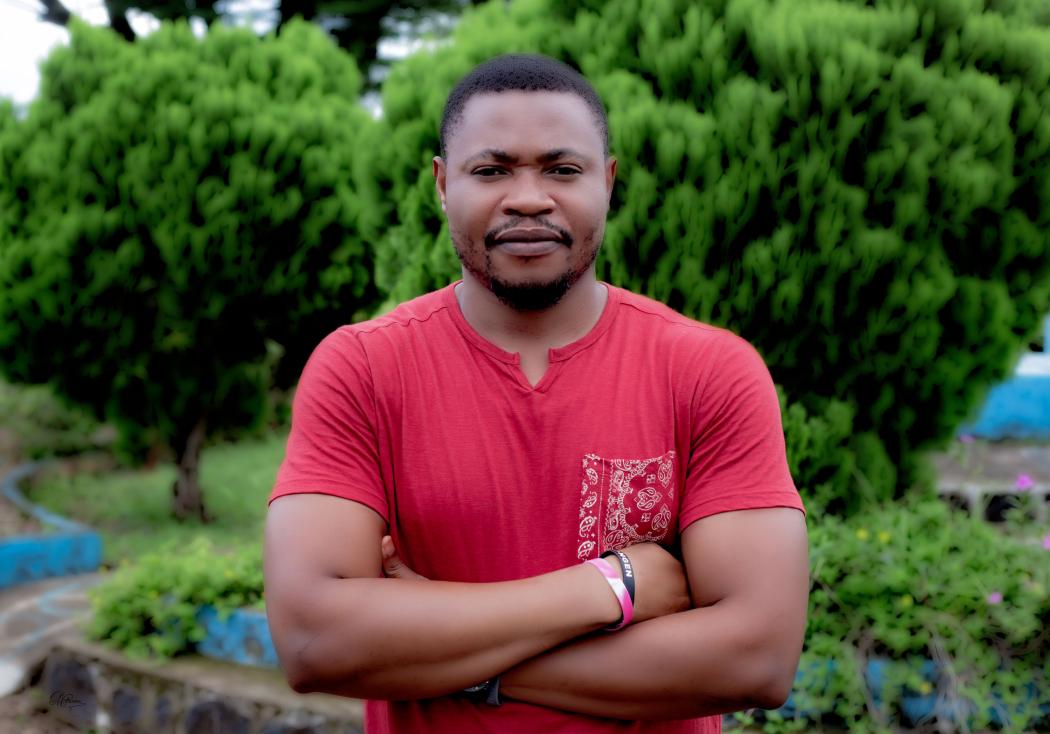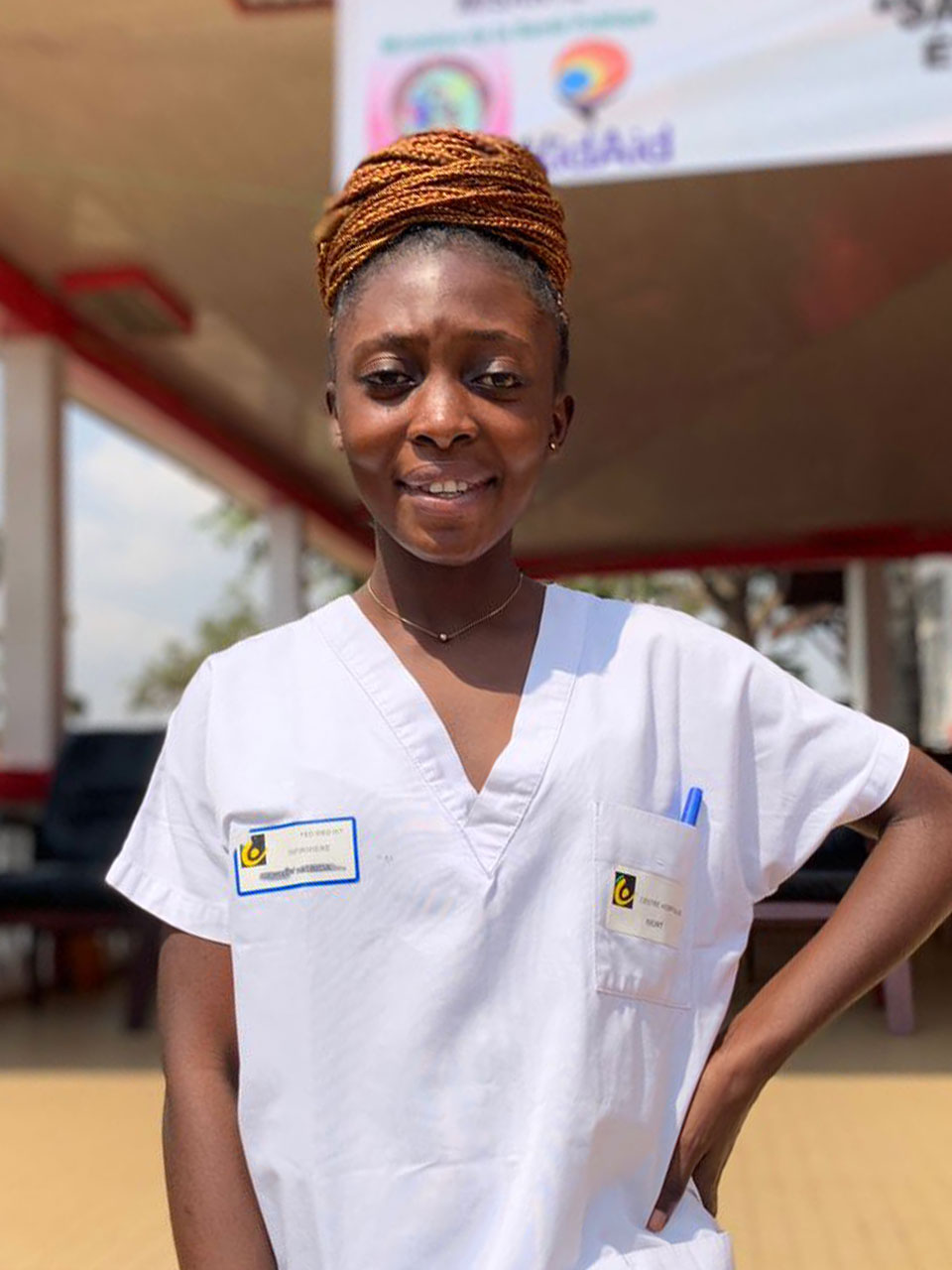An Advocate’s Update on Health Workers in Cameroon

Nwufor Ernest Awanto is a Sexual Reproductive Health and Rights (SRHR) Trainer in Cameroon. He was part of the first cohort of Frontline Health Worker Coalition Regional Advisors that served from July 2021 – June 2022. Photo courtesy Nwufor Ernest Awanto
What do health workers in Cameroon need? Rachel Deussom of Chemonics International recently checked in with Nwufor Ernest Awanto to find out what challenges health workers in Cameroon are currently facing and what policies and advocacy the Frontline Health Workers Coalition should be pursuing.
Rachel is Communications Cochair for the Coalition's Steering Committee, and Awanto was one of the Coalition's first Regional Advisors from July 2021 to June 2022. Last year the Coalition welcomed Regional Advisors like Awanto to its Steering Committee to help guide the Coalition’s policy recommendations, and provide regular updates on the health workforce in their country and region.
Awanto has years of experience partnering closely with health workers, as an HIV counselor and social worker, and now as a sexual reproductive health and rights (SRHR) trainer at Share-Net International.
Carol Bales edited this Q&A for length and clarity.
Q: What are the main health priorities and challenges in the communities you support in Cameroon?
Years of violence and political instability in the North-West and South-West regions of Cameroon has led to over 1 million internally displaced persons (IDP). As a result of the armed conflict in these regions, nearly one in five health centers is no longer functioning. So there’s a gap in access to and uptake of essential services, like for family planning and HIV care and treatment. I work in these regions as an SRHR trainer, and in recent years we’ve seen a rise in rape cases, unsafe and unwanted pregnancies, sexually transmitted diseases, gender-based violence (GBV), and maternal mortality.
One obvious challenge is the shortage of health workers. In 2018 the country had less than one nurse, midwife, or doctor for every 1,000 people, less than half the World Health Organization’s minimum recommendation. This is for several reasons, including slow recruitment and integration of trained health professionals into public facilities, and health workers fleeing the armed conflict to other countries.
There is also conflict between armed groups in the Far North region. Health workers who remain in these conflict areas suffer a heavy workload and a lot of pressure, especially in towns hosting over a thousand or more internally displaced persons. Health workers have been targeted just for doing their jobs, and so have the places where they work. Parties to conflict have burned down health facilities and arrested health workers for providing impartial medical care. Last month separatists abducted five health workers after storming their hospital.
Also salaries for health workers are low and not motivating. Some health workers in the private sector go for months without receiving their salaries. And women health workers often do not have the same professional opportunities as men. Psychologically it’s tough for these health workers, and without adequate mental health programs burnout and depression can set in. And then more health workers leave.
COVID-19 and the lock down that followed made things even worse for health workers, especially those in the rural communities, who also faced challenges with having sufficient medical supplies. Health workers I spoke to and work with were afraid of dying from Covid because they had limited personal protective equipment (PPE), and limited access to vaccines.
Women health workers need equal opportunities. And all health workers need more protection, including PPE but also from violence.

Nurse Nyanga Neola Anne is one of the health workers Awanto works with in Cameroon. Photo by Daga Miranda.
Q: What do frontline health workers need to respond effectively to these challenges?
Donors and policymakers need to invest further in training high-quality health workers, paying them fairly, and deploying them where they’re needed most to curb burnout and depression from work overload, but also to meet the health needs of Cameroonians. In 2019 Cameroon allocated just 4.29% of its annual budget to health—clearly that's not enough, so increasing the domestic health budget to support health systems and health workforce is the way forward.
Women health workers need equal opportunities for professional training and advancement. And all health workers need more protection, including PPE and access to vaccines, but also protection from violence and attacks related to the conflict. The Safeguarding Health in Conflict Coalition offers several recommendations for holding perpetrators accountable and strengthening policies to end violence against health workers. I urge the Ministry of Health to engage with military forces, armed groups, and frontline health workers to proactively work toward protecting health workers.
The government is taking some positive steps to improve working conditions for health workers. For example, new reference hospitals have been built in regions that really needed them, and more universities have been approved to train health workers and doctors. The Cameroon Medical Council and Cameroonian Association of Registered Nurses are constantly advocating and pushing for policies to protect, motivate, and support all health workers across sectors.
Increasing the domestic health budget to support health systems and health workforce is the way forward.
Q: You have years of experience working with youth. What can health workers do to support youth and youth-friendly SRHR services?
From experience I'd say it's all about engagement and building trust. Health workers can design SRHR or HIV programs and workshops focused on young people in health facilities and other spaces where young people can feel safe. And I suggest they include young people from the creative community to contribute their ideas.
For example in one of the communities I work with, two young people were made “Condom Ambassadors” by a health facility. These ambassadors were trained on SRHR and now lead activities explaining and encouraging use of male and female condoms to young people. They also take part in HIV/GBV and family planning community advocacy and sensitization campaigns, where they meet with other young people and have peer-to-peer discussions, answers questions, and encourage them to visit health facilities to benefit from the free services available.
Q: What does the ideal health workforce of the future—in 20 or 30 years from now—look like for you and what are steps we can take towards that vision today?
Health workers are supported by a stronger, more resilient, and digitally reliable health system, with improved health insurance coverage and reduced medical costs so everyone can access health services.
Health workers are introduced to new technologies—like Artificial Intelligence for early diagnosis —asked to contribute, and most importantly give feedback based on the realities in the field.
Institutions training health workers have partnerships with tech companies and start-ups to develop apps and gadgets that can facilitate and are adapted to the work environment of health workers.
Evidence is used to strengthen health systems and workers to meet the population’s health needs. Right now I'm conducting research to understand how different cultures in Cameroon have different health beliefs and the potential challenges for the future. We hope this information will assist stakeholders to find alternative but sustainable strategies and programs to strengthen health systems while preserving healthy cultures.
Health workers can live and work in Cameroon and not have to leave for greener pastures in Europe and other countries because they already have good salaries, equitable opportunities, and safe and friendly working conditions.
